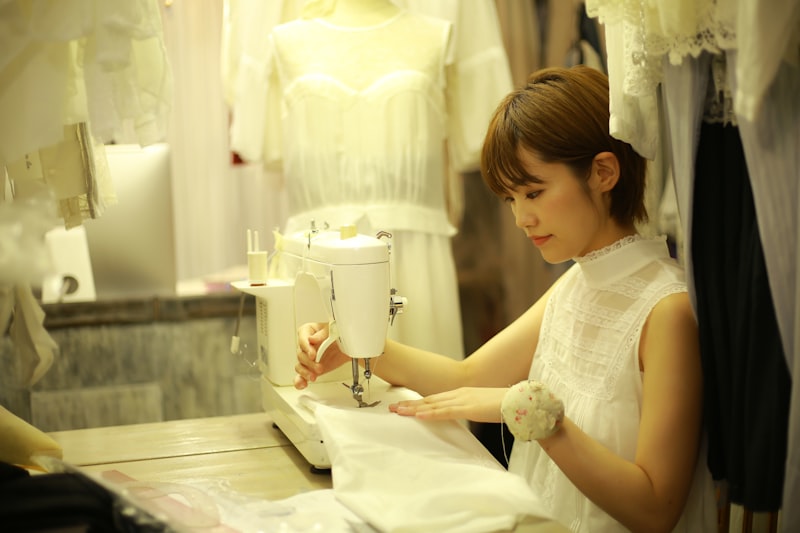Understanding the Impact of Economic Factors on Bridal Boutique Placement
Understanding the Impact of Economic Factors on Bridal Boutique Placement
The Significance of Economic Factors in Bridal Boutique Placement
The bridal industry is a thriving sector, with many entrepreneurs venturing to set up bridal boutiques. However, the success of these boutiques is heavily influenced by numerous economic factors. This article delves into how economic conditions shape the placement of bridal boutiques, helping potential owners make informed decisions.
Key Economic Factors Influencing Bridal Boutique Placement
Bridal boutiques must navigate a complex landscape of economic influences. Here are some of the most significant factors:
1. Local Economic Conditions
The broader economic environment in a region greatly affects consumer spending habits. For instance, areas with strong job growth tend to have higher disposable incomes, enabling consumers to spend more on weddings and related services. Conversely, regions experiencing economic downturns may see brides tightening their budgets. Entrepreneurs must assess local economic trends, such as employment rates and income levels, before choosing a location for their boutique.
2. Competition Analysis
The level of competition in a specific area can also dictate where a bridal boutique should be established. If there are numerous boutiques within close proximity, a new store may struggle to attract customers. Consequently, market research to identify gaps in the local wedding market is crucial. Understanding what competitors offer, their pricing strategies, and their target demographics can help a new boutique carve out its niche.
| Factor | Impact |
| Local Economic Conditions | Influences consumer spending power |
| Competition Levels | Determines market entry strategy |
| Consumer Trends | Affects product offerings and marketing |
3. Consumer Trends and Preferences
Economic factors also shape consumer preferences. For instance, during economic growth periods, brides may prefer high-end, luxury bridal gowns and accessories. However, during recessions, many may opt for budget-friendly choices. Bridal boutiques need to stay abreast of these trends to adjust their inventory accordingly and ensure their offerings resonate with the target market.
4. Seasonal Demand Variations
Wedding seasons also play a pivotal role in the economic success of bridal boutiques. Typically, demand spikes during specific months, such as June and September. Understanding these seasonal trends allows boutique owners to optimize their marketing strategies, inventory management, and staffing levels to meet peak demand periods.

The Importance of Location
Location is a critical element in the success of a bridal boutique. Factors such as visibility, accessibility, and proximity to complementary businesses (like florists, photographers, or event planners) can significantly enhance foot traffic. Areas with high wedding activity, such as near popular wedding venues, can be especially beneficial.
5. Rent and Overhead Costs
The economic landscape also influences rental rates and overhead costs associated with running a boutique. It's vital for entrepreneurs to consider the long-term sustainability of their location. High rent can squeeze profit margins, while areas with lower overhead costs might allow more flexibility in pricing strategies. A balance must be struck between location desirability and cost-efficiency.
6. Accessibility to Target Demographics
Understanding the target market is essential. For instance, a bridal boutique aiming at higher-income clients may want to position itself in upscale neighborhoods. Conversely, a boutique that caters to budget-conscious brides might find success in areas with lower rent and more diverse clientele.
Estimated Startup Costs for Bridal Boutiques
Before diving into opening a bridal boutique, entrepreneurs must understand the total potential costs involved. A breakdown of expected expenses can guide budgeting and financial planning:
| Expense Category | Estimated Cost (USD) |
| Lease/Rent | $1,500 - $5,000/month |
| Inventory | $10,000 - $50,000 |
| Marketing | $2,000 - $5,000 |
| Staffing | $2,500 - $6,000/month |
7. Economic Indicators to Monitor
Monitoring key economic indicators can help bridal boutique owners make informed decisions. Key indicators include:
- Consumer Confidence Index (CCI)
- Unemployment Rates
- Housing Market Trends
- Regional Economic Growth Rates
Strategies for Successful Placement
To maximize the impact of economic factors on their boutique's placement, owners should consider the following strategies:
1. Conduct Thorough Market Research
Understanding the local wedding industry landscape through surveys, focus groups, and competitor analysis can unveil valuable insights into customer preferences and spending power. Market research allows for better inventory selection and tailored marketing approaches.
2. Emphasize Online Presence
In an increasingly digital world, having a robust online presence can attract customers and provide a platform for showcasing products. Social media marketing, online storefronts, and search engine optimization (SEO) are vital tools in reaching brides who may not physically visit a boutique.
3. Build Relationships with Local Vendors
Establishing partnerships with local wedding vendors such as photographers, florists, and venues can create cross-promotional opportunities. This collaboration can drive traffic to the boutique while enhancing the perceived value of services offered.
4. Flexibility in Offerings
The ability to adapt offerings based on economic conditions is crucial. Whether it’s having a range of budget-friendly options or luxury collections, flexibility will ensure that the boutique can cater to various customer segments.
Conclusion & Recommendations
In summary, the placement of bridal boutiques is significantly impacted by various economic factors, from local economic conditions and consumer trends to competitive analysis and seasonal variations. By understanding these elements, potential boutique owners can strategically position themselves for success. It's essential to conduct thorough market research, monitor key economic indicators, and remain adaptable to changing market dynamics. Maintaining a strong online presence and building partnerships can further strengthen the boutique's position. Through these strategies, future bridal boutique owners can navigate the complexities of the bridal market and find a successful placement for their business.
